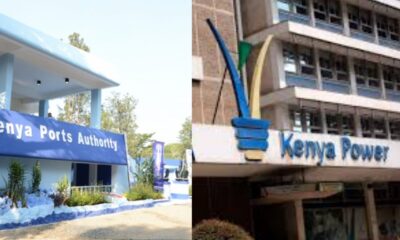The R1 Hybrid car has been a revelation in terms of speed and reliability but with hidden technical challenges especially with the cooling system a month before the WRC Safari Rally.
The cars ran safe under cold, snowy conditions in Monte Carlo and Sweden, unlike Portugal where co-drivers could smell the burning rubber soles of their racing boots inside the cockpits.
From Thursday, the WRC circus moves to Sardinia, Italy for the fifth round with engineers closely monitoring the cockpit temperatures that were troublesome in Portugal.
Temperatures soared to 70 degrees, a level that kills Coronavirus.
FIA is worried about the temperatures recorded in Portugal with engineers and manufacturers racing against time to tame this new phenomenon before the Safari.
Scientists say human body cells start to die anywhere between 46 and 60 degrees, and temperatures of around 50 degrees are when most irreversible damage to cells starts.
If the human body is unable to cool itself enough, it leads to heat cramps, heat exhaustion and even heat stroke.
Outside temperatures in Portugal proved to be a catalyst. The heat problem has been traced to the position of the exhaust piping in the 2022 Rally1 machines which, instead of being centralised with an exhaust tunnel, is situated on the right-hand side of the vehicles – right where the co-driver sits which almost roasted legs of the navigators.
Hyundai Motorsport deputy team principal Julian Moncet described the problems as being so bad, “and if left unresolved could result in most drivers failing to complete the Safari Rally route.”
The issue was identified during Hyundai’s mock rally test of its i20 N Rally1 last October although it was not noted in Monte Carlo, Sweden and Croatia until Portugal.
A statement from the FIA said: “A series of proposals have been presented to the members of the WRC Commission on Wednesday 25, May to address the challenges related to cockpit temperatures experienced at Rally Portugal last week and encourage manufacturer teams to use the full range of options offered by the regulations.
Some of those proposals require the support of the homologation commission.
“The WRC Commission has expressed strong support to take urgent action. The technical team at the FIA and manufacturers together are now working towards solutions to help resolve these issues ahead of the upcoming events Rally Italia Sardegna and Safari Rally Kenya.”
According to Google, manufacturers are worried by temperatures expected in Naivasha and Gilgil which could shoot up to 24 degrees Celsius this month.
Meanwhile. Rally Italy, the fifth WRC round starts in Alghero, directly opposite the island in Olbia which hosted the WRC last year.
The cars zoom off tomorrow, starting with the 3.53km Olmedo shakedown followed by the ceremonial start in the 3.23km super special stage in Cabu Abbas.
Kenyan rally fans can follow the action on NTV daily after the 9pm prime time news. Friday stages are the longest when the drivers will repeat the Terranova (14.19 km) and Monti di Alà (24.70 km) routes twice. They will then tackle Osilo-Tergu (14.63 km) and Sedini-Castelsardo (13.26 km).
Saturday stages are divided into four:131.82km-long Tempio Pausania (12.03 km) and Erula-Tula (15.27 km) in the morning followed by Coiluna – Loelle (21.60 km) and Monte Lerno (17.01 km) stages in the afternoon.
On Sunday, a new champion will be known after the Cala Flumini (12.55km) and Sassari-Argentiera (7.10km) tests, ran twice followed by the Wolf Power Stage.
Championship leader Kalle Rovanpera hopes to extend his three-rallies winning streak.

 General News1 week ago
General News1 week ago
 Politics1 week ago
Politics1 week ago
 Business News7 days ago
Business News7 days ago
 General News6 days ago
General News6 days ago
 Business News10 hours ago
Business News10 hours ago




